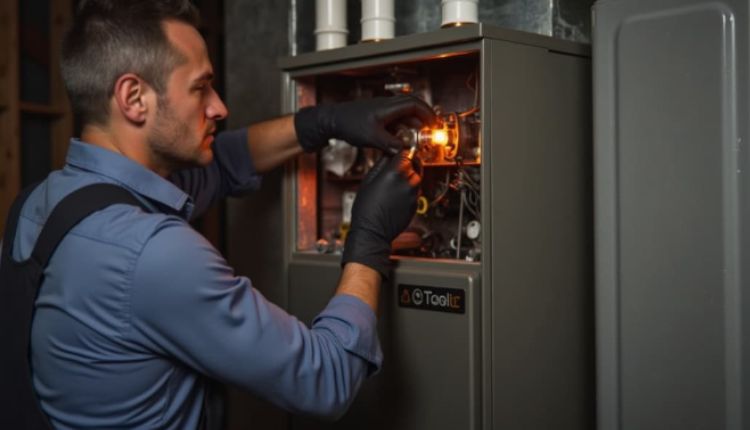Most property owners don’t think about the importance of their furnace until it stops working. It’s background noise—literally. But like a small leak under the sink or a slow-draining shower, ignoring minor furnace issues can turn into expensive, disruptive problems.
Here’s the twist: it’s not just about staying warm. It’s about protecting your home, your wallet, and even your health.
The “Not a Big Deal” Problems That Are a Big Deal
Let’s say your furnace kicks on a little slower than usual. Or it makes a soft buzzing sound. Maybe there’s a faint burnt smell when it runs for the first time in fall. These quirks might seem harmless, but they often signal early-stage mechanical or electrical issues.
For example, a buzzing sound could point to a failing capacitor. That’s a $100-$200 fix if caught early. Wait too long? You might need a new blower motor. That’s four times the cost.
These small signals often go unnoticed because the system still works—until it doesn’t.
Why That “Minor” Issue Costs So Much Later
Here’s what happens when small problems are ignored:
- Efficiency drops. A struggling furnace uses more energy to do less work.
- Stress builds up. When one part fails or strains, the others overcompensate.
- Safety risks increase. Cracks in the heat exchanger or blocked vents can lead to carbon monoxide leaks.
Even newer systems aren’t immune. A high-efficiency system like a Lennox furnace in Westminster CO still needs regular inspection to ensure it performs safely and efficiently.
The Real Cost: Your Comfort and Convenience
Furnaces love to fail at the worst time: the coldest day of winter. That’s not a coincidence. It’s physics. The colder it is, the harder your system works. And if it’s already weak, that stress becomes a breaking point.
That means:
- Emergency repair fees
- Long waits for service
- Disrupted work or sleep
- The scramble to keep pipes from freezing
Compare that with a 30-minute maintenance visit in October, and the choice is obvious.
How Maintenance Pays for Itself
A well-maintained furnace can last 15-20 years. A neglected one might die in ten. Let’s break it down:
- Annual tune-up: $100-$150
- Major repair (avoidable): $500-$1,200
- Full replacement (early): $4,000-$8,000
Catch issues early, and the math always favors prevention. Plus, many manufacturers (including Amana and Lennox) require proof of maintenance to honor their warranties. So skipping that fall checkup? It might cost you your warranty.
If you own an Amana furnace Westminster CO, for example, local pros know what issues tend to crop up with specific models and how to head them off.
How to Spot a Furnace Headed for Trouble
Most warning signs are easy to miss if you don’t know what to look for. Keep an eye (and ear) out for:
- Uneven heating
- Furnace cycling on and off more frequently
- Strange noises: rattling, whistling, humming
- Unusual smells: dusty, burnt, or chemical
- Higher energy bills with no clear reason
One or two of these might be harmless. But together? They’re your furnace waving a red flag.
Don’t Just Call When It Breaks
People often wait until their furnace is totally dead to call a technician. But a seasonal check-up isn’t just a courtesy call. It’s a chance to:
- Clean dust buildup that affects airflow
- Test safety sensors
- Replace worn belts or filters
- Check for carbon monoxide leaks
- Confirm proper airflow and thermostat function
And yes, it also helps you plan. Maybe your 15-year-old unit is still running fine. But if it’s starting to slip, you can budget for a replacement instead of scrambling during a snowstorm.
If you’re weighing options, a Lennox furnace Westminster CO can be a smart long-term investment for energy savings and reliability. But even top-tier equipment needs TLC.
The Bottom Line: Start Small, Stay Ahead
Furnace issues don’t usually show up all at once. They creep in. What starts as a soft rattle or a longer-than-usual start-up can become a major inconvenience—or an emergency.
So don’t wait for a full shutdown. Schedule a pre-season check. Fix the small stuff. Pay attention to your system. It’s the best way to keep your home warm, your family safe, and your costs predictable.
Small problems are never just small. Not with a furnace.






